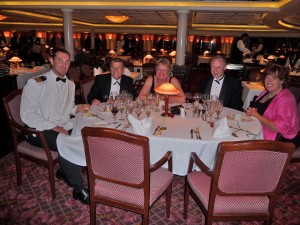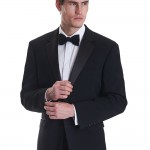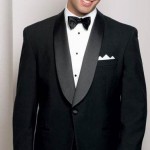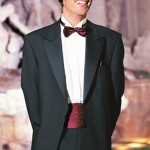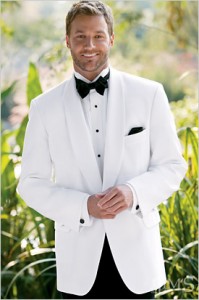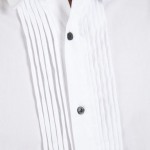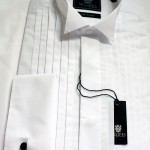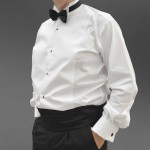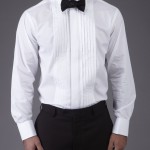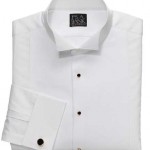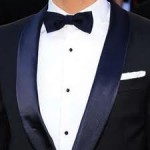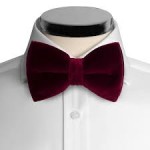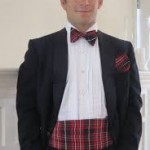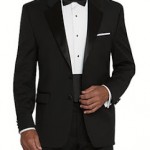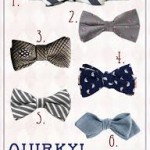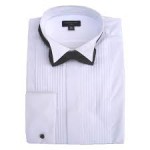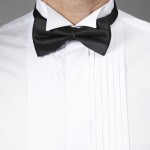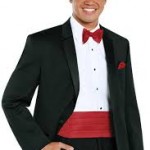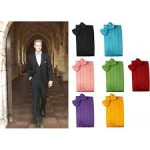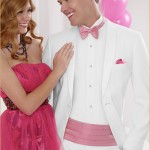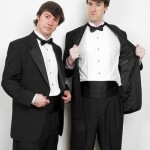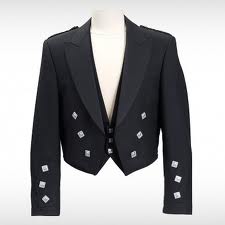What to Wear on Formal Night
Black-and-White Clarity
‘The interpretation of “formal” and “informal” became progressively more subjective in the second half of the twentieth century, hosts increasingly turned to codes that literally spell out the required attire’.
White Tie is the dressiest end of the scale (or Evening Dress in the UK) an invitation is announced that male guests are required to wear a tailcoat with the appropriate accoutrements while the ladies were expected to wear ball gowns.
Black tie is a dress code for socials events and functions derived in the 19th century. Black tie is less formal than white tie. This attire is worn only after six o’clock where it is declared that traditional tuxedos and evening gowns were required.
For the least formal evening affairs, Business Attire allowed guests to attend in conservative suits.
- Evening suits can be hired on board ship
Formal wear is traditional, today it is still much the same to a lesser or greater extent, to attend an event at home one would seek the guidance from the host as to what was expected.
On a cruise the captain is your host, formal evenings the dress code is black tie
Black Jackets

Indulgent
Black jackets are usually black with a shawl collar, peaked or notched lapels faced with satin or grosgrain. (Grosgrain is a type of firm, close-woven, fine-corded fabric, characterized by its ribbed appearance. It has a very dull appearance with little luster)
- Notch lapel
- Shawl lapel
- Peak lapel
White Dinner Jacket
White dinner jackets are often worn in warm climates. They are usually ivory in colour rather than pure white, and usually have self-faced lapels (i.e., made of the same fabric as the jacket) rather than silk-faced lapels.
They are generally worn with the same types of shirts and accessories as black dinner jackets, though the turn down collar and cummerbund are more commonly seen than are the wing collar or waistcoat. Similarly, the shawl lapel is more common in white dinner jackets.
 In the UK, the 20th Century etiquette was that white dinner jackets are never worn, even on the hottest day of summer, but are reserved for wear abroad. Today, white dinner jackets are frequently seen at weddings, formal beach events, and high-school proms, in the U.S. and at some concerts (famously for instance the Last night of the proms) in the UK.
In the UK, the 20th Century etiquette was that white dinner jackets are never worn, even on the hottest day of summer, but are reserved for wear abroad. Today, white dinner jackets are frequently seen at weddings, formal beach events, and high-school proms, in the U.S. and at some concerts (famously for instance the Last night of the proms) in the UK.
In tropical climates, such as in Imperial Burma, desert fawn was historically used as the less formal colour. At one time the (civilian) mess jacket was also an option in warmer climates.
It is generally considered inappropriate for a man to remove his jacket during a formal social event, but when hot weather and humidity dictate, the ranking man (of the royal family, the guest of honour) may give men permission by noticeably taking off his jacket.
Trousers have a lateral single satin band covering the seems. They have no turn ups and no belt loops. Evening trousers can be flat-fronted or pleated.
Shirts
- A wing collar dress shirt Fly fronted, plain bib. Double cuff, so cuff links required.
- Pique evening dress shirt with wing collar, cotton pique (marcella) evening shirt.
- Pleat front, double cuffs.
- Wing collar
- There are two types of fronts for evening shirts, Marcella and pleated,
White dress shirt with marcella (marcella, refers to a weaving style, normally used with cotton yarn, which is characterised by raised parallel cords or fine ribbing), or pleated front, with fold over or winged collar. French cuffs with cufflinks.
The bosom of a traditional formal shirt has a unique vertically rectangular double layer of fabric. Traditionally, the bosom of a dress shirt has pleats or piqué. A dinner shirt that doesn’t feature pleats often features some texture such as piqué- this makes a dress shirt look and feel luxurious. Either of the two styles can look fabulous when donned with a finely tailored dinner suit . If you opt for a pleated dinner shirt , your dry cleaner won’t appreciate it; it’s more of an ironing test for your dry cleaner.
The original and most formal version of the dress shirt fastens with matching shirt studs. Dress shirts with a fly-front placket are also traditional. However, lately it has become quite common to allow buttons to show, although this is less formal. Studs and links are most commonly in silver or gold settings, featuring onyx or mother-of-pearl; various geometrical shapes are worn, e.g., circles (most common for studs), octagons, or rectangles (most common for links). There has been no consistent fashion preference for gold or silver, but mother-of-pearl is more formal and therefore often associated with white tie.
Bow tie
Cummerbund
One important rule is to cover your waist wearing a waistcoat or a cummerbund which means that only your shirt is visible which creates a powerful ‘V’ at your chest moving the eye line upwards to the shoulder. The silk peaked lapels frame the shape and emphasis your shoulders and your figure is flattered.
Traditionally a black cummerbund should be worn when wearing a single-breasted jacket and never worn with a double breasted jacket.
The cummerbund, derived from military dress uniform in British India, is worn with its pleats facing up, and is normally of the same cloth as the bow tie and lapels though strictly, the cummerbund, bow tie and lapels should be of different material. Maroon, a colour commonly worn to accompany black tie, is often used for the cummerbund in less a colour commonly worn to accompany black tie, is often used for the cummerbund in less formal or summer situations (though it should be noted that this is not to match the bow tie, which in the current era is invariably black).
Today there are many coloured sets in colour ways such as reds, grey, maroon, diamanté, plaid and many more which are only acceptable in less strict formal event.
Waistcoat low cut waistcoat are worn as alternative to cummerbund
Waistcoats come in the ‘V’ or rarer ‘U’ shape, in backless or fully backed versions, double or single breasted, with or without lapels. Single breasted styles typically have three buttons, and double breasted ones three or four rows.
Shoes traditionally patent leather court shoes (pumps); now often highly polished or patent leather Oxfords instead.
Socks Black dress socks, usually of silk or fine wool.
(I have seen coloured and striped sock worn please don’t this shows both arrogance and ignorance).
Dark dinner suit
It is accepted on a cruise due to the nature of traveling, that on a formal evening that a black dinner suit and tie maybe worn
Mess dress
For formal dining, uniformed services officers and non-commissioned officers normally wear mess uniform equivalents to the civilian black tie and evening dress. Mess uniforms may vary according to the wearers’ respective branches of the armed services, regiments, or corps, but usually include a short Eton-style coat reaching to the waist. Some include white shirts, black bow ties, and low-cut waistcoats, while others feature high collars that fasten around the neck and corresponding high-gorge waistcoats.
Scottish Highland dress
Prince Charlie Jacket
Formal black tie Highland regalia, kilt and Prince Charlie jacket
Scottish Highland dress is often worn to black- and white-tie occasions, especially at Scottish reels and cèilidhean; the black-tie version is more common, even at white-tie occasions. Traditionally, black-tie Scots Highland dress comprises:
Black barathea jacket with silver buttons—Regulation Doublet, Prince Charlie, Brian Boru, Braemar, Argyll, and black mess jackets are suitable.
There is some contention about whether the Duke of Montrose and Sheriffmuir doublets are too formal for black-tie occasions. Matching or tartan waistcoat Kilt 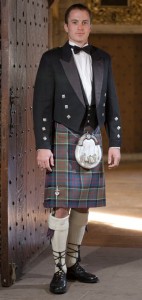
White shirt with shirt studs, French or barrel cuffs, and a turn-down collar (wing collars are generally reserved for white tie in the UK)
Black bow tie or white lace jabot
Highland Dress and Kilt Etiquette

There are two rules when it comes to kilts: they should only be worn by those with a Scottish or Gaelic connection; and the correct attire must be worn to suit the occasion.
Formal kiltwear involves donning one’s own tartan – modern, ancient or dress. Ensure that the length of the kilt is right: whilst the contemporary trend is towards the shorter kilt, which sits above the knee, traditional wearers insist that it should sit high on the waist – beneath the bottom rib, and rest between the top and middle of the kneecap.
Accompaniments depend on the occasion. Daywear requires a plain tweed jacket, accompanied by plain sporran, shirt and tie, hose and brogues. The Prince Charlie or Kenmore doublet is appropriate for eveningwear. Marry this with a dress sporran, which is usually decorated with fur.
For a more versatile and less formal look, don an Argyll outfit: worn with a standard white shirt and classic tie, this attire is suitable for Burns Suppers, ceilidhs and afternoon weddings.
– See more at: http://www.debretts.com/british-etiquette/british-behaviour/h/dress-codes/highland-dress-and-kilt-etiquette#sthash.cadzSw0A.dpuf
Tradition cultural formal wear is acceptable on formal black tie events
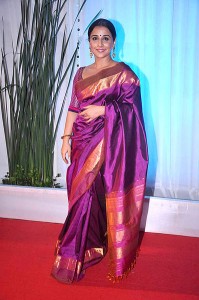
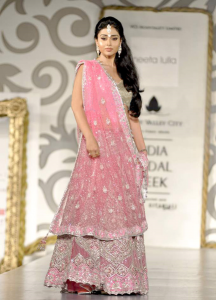
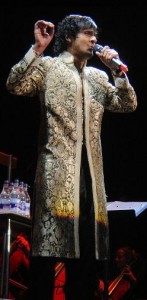 Sonu Nigam wearing sherwani at his concert
Sonu Nigam wearing sherwani at his concert
